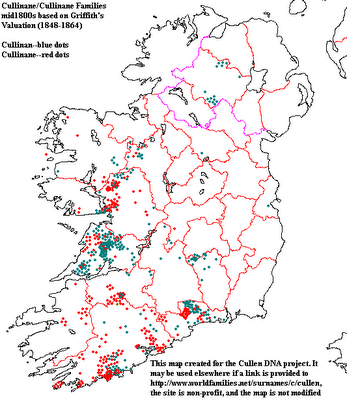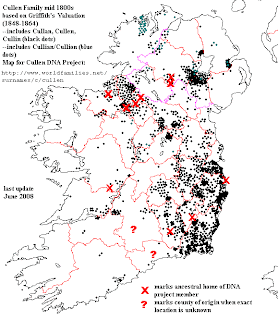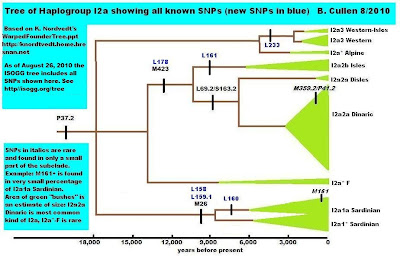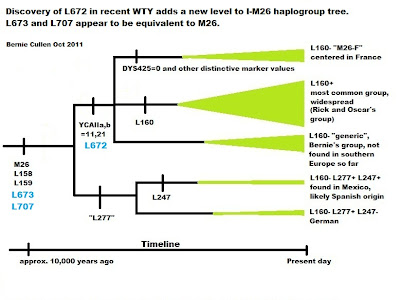from lewis' topographical dictionary of Ireland (1842):
Tyrone--Clogher
scroll down or search for Clogher or O'Cuillen:
Clogher is called by Ptolemy Rhigia or Regia; and according to some authors, St. Patrick founded and presided over a monastery here, which he resigned to St. Kertenn when he went to Armagh, to establish his famous abbey there; but according to others, it was built at the command of St. Patrick in the street before the royal palace of Ergal, by St. Macartin, whoe died in 506, and from its vicinity to this palace both the abbey and the town appear anciently to have been called Uriel or Ergal. In 841, the abbot Moran Mac Inrachty was slain by the Danes. In 1041 the church was rebuilt and dedicated to St. Macartin. In 1126 the Archdeacon Muireadhach O'Cuillen was killed by the people of Fermanagh. Moelisa O'Carrol, Bishop of Clogher, in 1183, on his translation of the archbishoprick of Armagh, presented to this abbey a priest's vestments and a mitre, and promised a pastoral staff; he also consecrated the abbey church. etc etc
Why did the people of Fermanagh kill the archdeacon?
Tyrone--Clogher
scroll down or search for Clogher or O'Cuillen:
Clogher is called by Ptolemy Rhigia or Regia; and according to some authors, St. Patrick founded and presided over a monastery here, which he resigned to St. Kertenn when he went to Armagh, to establish his famous abbey there; but according to others, it was built at the command of St. Patrick in the street before the royal palace of Ergal, by St. Macartin, whoe died in 506, and from its vicinity to this palace both the abbey and the town appear anciently to have been called Uriel or Ergal. In 841, the abbot Moran Mac Inrachty was slain by the Danes. In 1041 the church was rebuilt and dedicated to St. Macartin. In 1126 the Archdeacon Muireadhach O'Cuillen was killed by the people of Fermanagh. Moelisa O'Carrol, Bishop of Clogher, in 1183, on his translation of the archbishoprick of Armagh, presented to this abbey a priest's vestments and a mitre, and promised a pastoral staff; he also consecrated the abbey church. etc etc
Why did the people of Fermanagh kill the archdeacon?











